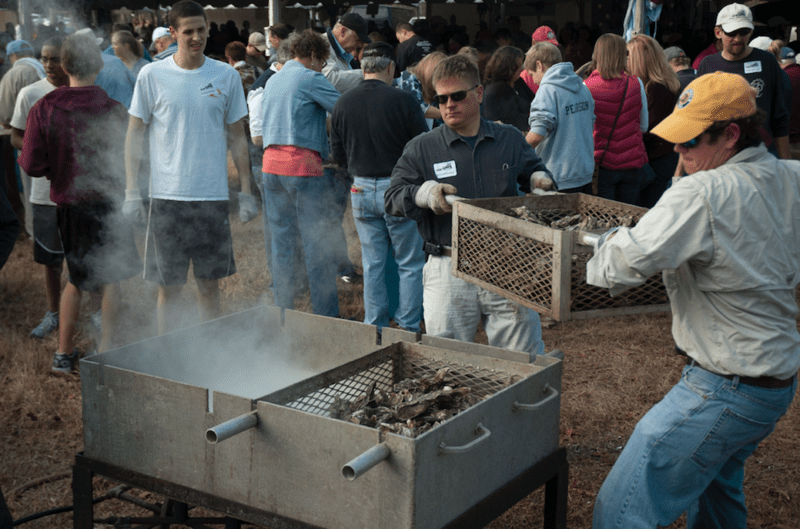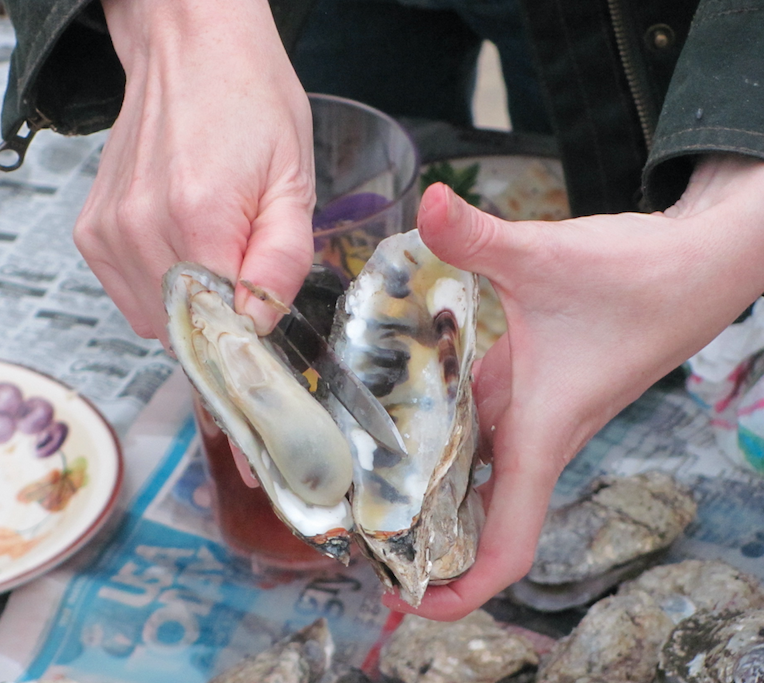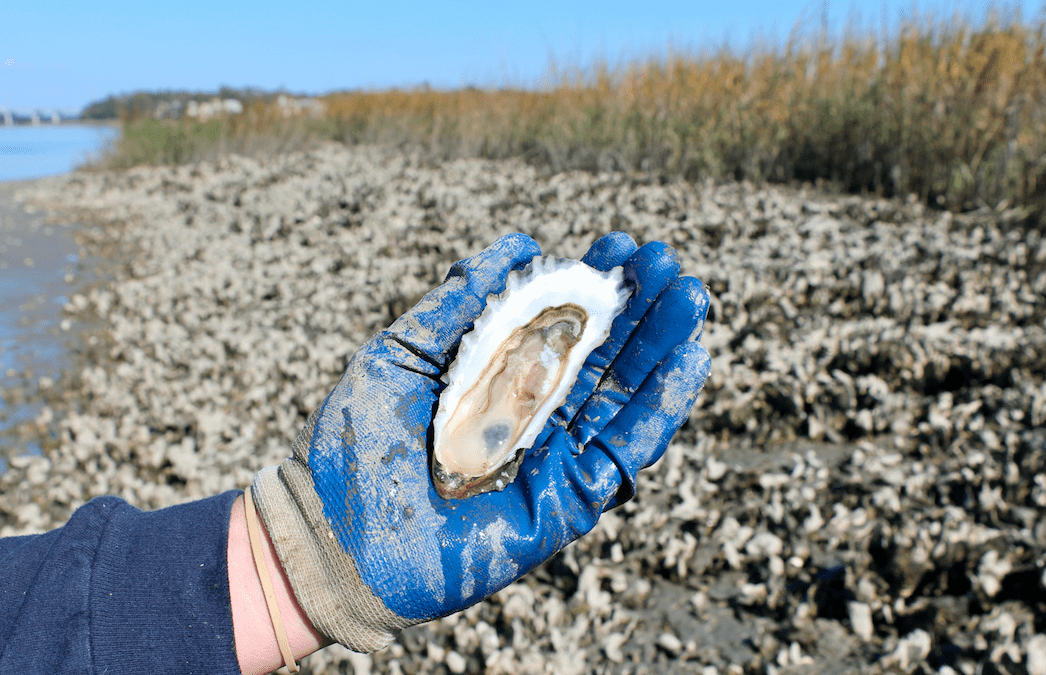October is oyster season in the southeast, and there are a few things the United Oyster Ranchers and Rodeo Association of America doesn’t want you to know about the common oyster.
“Secret, and self-contained, and solitary as an oyster.” – Charles Dickens
“He was a very valiant man who first adventured on eating of oysters.” – Thomas Fuller
October is oyster season in the southeast, and there are a few things the United Oyster Ranchers and Rodeo Association of America doesn’t want you to know about the common oyster:
- Despite their gnarly, unappealing exterior, oysters are actually slimy and disgusting-looking fellows on the inside.
- You don’t have to pay $30 a bushel at the local seafood market. You can, in fact, catch them on your own if you don’t mind a little work and some pluff mud between your toes. Most oysters don’t run very fast.
- Oysters are high in calcium, iron and protein. But so are beef cows.
But before you go judging oysters strictly on their appearance and texture, you should probably know that most oysters are fascinating and tasty creatures that are usually quite friendly and often make excellent house pets. In fact, here are a few more oyster “facts” most people don’t know.
Oysters have been consumed by man-like creatures even before the first homo sapien walked erect around 50,000 years ago. Most of these early humans are now extinct but archeologists still can’t prove that the oysters were directly responsible.
The word “oyster” is derived from the French word, “oistre,” which in turn is derived from the Latin word, “ostrea,” which means “phlegm-like creature that you pay too much for in a fancy restaurant.”
Most oysters live on beds, or oyster reefs, and are generally very hospitable hosts. The hard surfaces of oyster shells provide homes for many smaller animals, such as sea anemones, barnacles and hooked mussels, which in turn provide food for larger sea creatures and marine birds. And the benevolent oysters don’t even charge their guests rent. I told you they were friendly.

Oysters can be found all over the world but are more common along coastal areas, where people apparently don’t realize that they can find other food sources in the ocean that aren’t slippery and weird looking.
In the Caribbean, at least one family of tropical oysters attaches themselves to mangrove roots – making them the only seafood dish to grow on trees.
Oysters are invertebrate omnivores with a small, three-chambered heart, but aside from those physical features they have little in common with most modern political leaders. But, unlike many politicians, they can range in size from 3 inches to 14 inches, depending on what state they are campaigning in.
The average oyster has a typical lifespan in captivity of up to 20 years and in cocktail sauce of no longer than 20 minutes.

Contrary to popular myth, pearls are not created when an oyster ingests a grain of sand but rather when it is invaded by a parasite. The pearl then covers the invader with a slimy but slowly hardening substance called nacre. This means that when you buy your wife a pearl necklace you are actually giving her a bunch of slime-covered parasites. Happy Birthday, dear.
It takes up to six years for an oyster to make a pearl. And it can take just as long to get up enough nerve to eat a raw oyster. That’s why most people prefer them dipped in cornmeal batter and fried. The oysters, not the pearls.
In South Carolina, the locals say you should harvest oysters only during the months that have an “r” in them, meaning the cooler months of September through April. During the remaining months you can harvest Rocky Mountain Oysters instead. But you’ll need a stronger stomach and a bigger knife. (This might explain why some beef cows have been spotted with signs that say “ET MOR OYSTERS!”)
Oysters have strong adductor muscles to close their shells when threatened by predators such as crabs, sea birds, starfish, pearl divers, Captain D and the occasional spouse looking for that perfect jewelry accessory.
Most animal rights activists say it is okay to eat oysters because they don’t have a central nervous system and can’t feel pain. However, no one has bothered to survey the oysters and see how they feel about all this.

There are numerous oyster festivals around the world and opening, or “shucking,” oysters has become a competitive sport. The world’s premiere event is the Guinness World Oyster Opening Championship held each September in Galway, Ireland, where they drink a lot of strong, dark beer and by nightfall aren’t real picky about what they eat. But be careful: if you drink too much Irish beer you might start shucking off your clothes! Or does that just happen to me?
Oysters reproduce when the water warms by broadcast spawning, discharging millions of eggs into the water, which is every bit as disgusting as it sounds. And oysters keep their reproductive organs, or gonads, tucked away right next to and surrounding their digestive organs. Which makes the old saying true: the quickest way to a male oyster’s heart is through his stomach.
An oyster will change gender at least once during its lifetime. This can make long-term oyster romances kind of tricky. Thus, the divorce rate among oysters is higher than the national average.
Oyster reproductive organs contain both eggs and sperm, so it is technically possible for an oyster to fertilize its own egg, which takes rural, Southern inbreeding to a whole new level. Talk about a do-it-yourselfer!
Oysters are often considered aphrodisiacs because they are rich in amino acids that trigger increased levels of certain sex hormones, but they are only effective if you eat at least half a bushel. But by then the only thing you’ll be in the mood for is an Alka-Seltzer and a long nap.
Recreational harvesting of oysters is a popular and traditional activity around the southeast, but for your safety and the good of the environment please be sure to obey all Department of Natural Resources restrictions and regulations. And DNR law enforcement agents will know if you don’t because your pet oyster will turn you in to Crime Stoppers for the reward money.
While most species of oysters are not currently listed as threatened or endangered in our area, they are extremely sensitive to poor water quality and susceptible to coastal pollution (often retaining toxins in their flesh that can make them unhealthy for human consumption.) In many areas where oysters were once abundant populations have dwindled or disappeared. So, dear seafood lover, if you want to protect your friendly neighborhood oyster, do your part to help keep our coastal areas clean.
And take your pet oyster for a walk every now and then while you’re at it. I’m sure he/she will appreciate it.
How to Eat Your Friendly Neighborhood Oyster
There are many purists in the cult of oyster lovers that will tell you that the best – and only way – to truly savor these slippery bivalves is either raw or steamed over a backyard fire. You will not find me among the ranks of this clan, although I am sure they are perfectly normal people otherwise.
Then there is a more refined and sophisticated lot (that I will occasionally rub elbows with) that prefers to grill them “on the half shell.” Shuck them, remove the top shell, and cover them with crispy smoked bacon, Worchestershire sauce, balsamic vinegar and butter to enjoy Oysters Kilpatrick, a classic Australian dish. Or jazz these shellfish up a notch with spices, bacon, cooked spinach, parsley, green onions, bread crumbs and sometimes even cheese, and then bake them in the oven or over a smoky wood fire or charcoal embers for the perfect Oyster Rockefeller, a New Orleans creation.
These half-shell options offer a little culinary creativity while maintaining the essence of the oyster, and both are excellent dishes.
Being the simple guy I am, I don’t want to outclass the humble oyster. Give me a can of smoked oysters, some hot sauce and a cold beer and I am content. But when I do take to the kitchen, nothing fires up my taste buds quite like buffalo fried oysters.

Buffalo Fried Oysters
You’ll need:
- 2 dozen oysters, cleaned [you can shuck them yourself or buy them preshucked, which would be about two cups]
- 1 cup yellow corn meal
- 1 cup all-purpose flour
- 1 teaspoon of your favorite seafood seasoning [Old Bay, Zatarain’s, etc.]
- 1 teaspoon salt
- Vegetable oil for frying
- 1 stick of melted butter
- 1/3 cup of your favorite hot sauce
Prepare your buffalo sauce by whisking the butter and hot sauce together well. Set aside.
Combine cornmeal, flour, seafood seasoning and salt in a shallow dish. Dredge the oysters well in this mixture and set aside on a baking sheet or wax paper.
Pour about an inch of oil in a large skillet and bring to medium-high heat (about 350 degrees). Fry the oysters until golden brown on all sides (you will need to turn them) and then drain them on a paper-towel covered dish.
Toss the drained but still hot oysters into the buffalo sauce, remove and serve.
Optional: Buffalo fried oysters can be served sprinkled with blue cheese crumbles or dipped in ranch dressing. Pairs well with cold beer.
All photos are courtesy of the South Carolina Department of Natural Resources.
 Within the pages of The Ultimate Guide to Cooking Wild Game, twenty-five popular game animals are highlighted and discussed. Amateur and experienced hunters alike will enjoy learning about each animal’s origin, range, migration and travel patterns, life span, size and weight, typical habitat, desired foods, why the particular animal is targeted, where it can be hunted, along with hunting tips and why it makes for excellent table fare.
Within the pages of The Ultimate Guide to Cooking Wild Game, twenty-five popular game animals are highlighted and discussed. Amateur and experienced hunters alike will enjoy learning about each animal’s origin, range, migration and travel patterns, life span, size and weight, typical habitat, desired foods, why the particular animal is targeted, where it can be hunted, along with hunting tips and why it makes for excellent table fare.
Whether you hunt for food, for pleasure, or for environmental management, know that you are engaging in a normal, natural, and innate human instinct that has been with mankind and our predecessors for hundreds of thousands of years and one that will be with us for many more years to come. Enjoy the hunt, and the tastes and flavors of your successes with a little help from this new book! Buy Now




